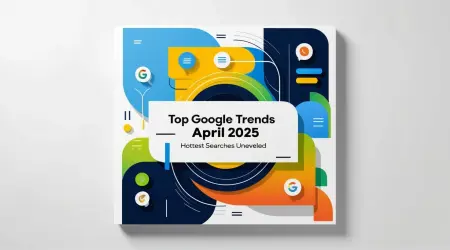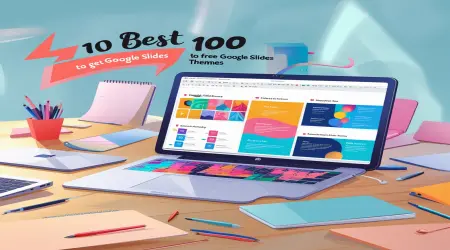Netflix's Big Jump into Generative AI Ads: What’s Next for 2026 and Beyond
Introduction
Netflix is shaking things up in the world of streaming, and advertising is a key part of its plan. As we look ahead to 2025 and after, streaming ads are going to see some major changes, with generative AI leading the way. In this post, we’ll dive into Netflix’s upcoming ad strategies, especially its plan to roll out generative AI-powered ads in 2026, and how this move places it in the competitive streaming scene.
Netflix has always been known for its ad-free viewing experience. But with the competition heating up from platforms like Amazon Prime Video and Disney+, Netflix is adding ads to its mix. Since launching its ad-supported plan in November 2022, it has gained 94 million subscribers on the $8 a month plan by May 2025—a 34% bump from November 2024 (Media Play News). So what’s next for Netflix when it comes to advertising? Well, generative AI is ready to change how ads are made and delivered on streaming services.
👉Should You Use TikTok Ads for a Niche Product in 2025?
Section 1: Netflix’s Ad Journey
Netflix kicked off its ad adventure in 2022 when it launched its ad-supported tier. This was a smart move to keep up with the rising competition in the streaming world and to bring in extra cash. By offering a cheaper ad-supported option, Netflix aimed to pull in viewers who are more budget-conscious while still giving good value to its premium subscribers.
Growth of Ad-Supported Subscribers
As of May 2025, Netflix’s ad-supported tier now boasts 94 million subscribers—a big part of its total audience of 300 million (The Verge). This growth shows that viewers are warming up to the idea of ad-supported streaming, especially with prices getting tight. Amy Reinhard, Netflix’s ad president, pointed out that half of the new subscribers are choosing the $8 a month ad-supported plan instead of the ad-free options that start at $18 a month, which shows how appealing this tier can be.
Current Ad Formats
Currently, Netflix serves up traditional pre-roll and mid-roll ads on its ad-supported tier. But they've also been experimenting with newer formats like pause ads, which started in July 2024 (The Verge). These ads pop up when you pause your show, giving advertisers a chance to connect with viewers during downtime. The success of these tests is clearing the way for even cooler ad formats in 2026.
Upcoming Innovations
Looking towards 2026, Netflix is planning to roll out generative AI-powered ads, including interactive mid-roll and pause ads. These ads will use AI to blend in with the shows and movies viewers are watching, making them more fun and less annoying. For example, you might see a product featured within a scene from a hit Netflix show like Stranger Things, creating a more engaging ad experience (AV Club). Netflix’s in-house advertising platform, launched in the US in April 2025, is set to go global by June and will support these new formats, allowing advertisers to craft super targeted campaigns (StreamTV Insider).
Section 2: The Role of Generative AI in Streaming Ads
Generative AI is a cool tech that creates new content like images, text, or videos from existing data. In ads, it can whip up personalized and relevant content that fits right into what viewers like and what they are watching.
How Netflix Plans to Use AI
Netflix plans to use generative AI to merge advertisers’ messages with the worlds of its shows, as Amy Reinhard put it. So, ads will match the specific show or flick being watched, creating a smoother and more enjoyable viewing experience. For instance, a person watching a sci-fi show might see an ad for a gadget placed in a futuristic setting, boosting the immersion (MobileSyrup). This approach taps into Netflix’s huge library of content and viewer preferences to deliver ads that feel like part of the show.
Potential Impact on Viewer Experience
While these AI-generated ads could be more engaging, there’s some worry about them becoming too intrusive. Critics argue that blending ads directly into content might cross the line between entertainment and advertising and could turn off viewers who prefer an ad-free experience (Daily Mail). However, Netflix has found that ad-supported subscribers are already tuning in, spending around 41 hours a month on the platform. The real challenge is to make sure these ads add to the experience rather than disrupt it.
Examples of AI-Generated Ads
One example shown at Netflix’s Upfront 2025 event was an ad that placed a product against a backdrop inspired by Stranger Things. This type of ad not only showcases the product but also strengthens the viewer's connection to the show, making it beneficial for both advertisers and viewers alike (Interesting Engineering). Another idea is interactive ads that let viewers engage more with the content, like clicking on a product to find out more or even buy it, similar to Amazon’s shoppable ads.
Section 3: Competitor Analysis
Netflix isn’t alone in testing out innovative ad strategies. Rivals like Amazon Prime Video and Disney+ are working on their own new ad formats, leading to a competitive advertising scene in streaming.
Amazon Prime Video
Amazon has been a leader in interactive advertising, rolling out contextual pause ads and shoppable ads. These formats let viewers interact with ads directly, letting them buy products featured in ads without leaving the streaming service. Amazon’s approach fits with the growing trend of interactive and shoppable advertising, which is predicted to take off even more in 2025 (Amazon Ads). With around 115 million viewers each month in the US, Prime Video's ad-supported plan offers a huge reach, making it a tough competitor for Netflix.
Disney+ and Hulu
Disney has used its massive content library and sports rights to draw in advertisers. With 164 million ad-supported monthly active users across platforms like Disney+, Hulu, and ESPN+, Disney commands an impressive reach (The Walt Disney Company). Disney’s focus on sports, especially women’s sports, has led to an increase in sponsorships and partnerships, controlling over 65% of live women’s sports rights on ESPN. Plus, Disney’s investment in ad technology allows for more targeted and measurable ad campaigns (Disney Advertising).
Other Streaming Services
Other platforms like Peacock, Paramount+, and Max are also ramping up their ad-supported options, focusing on live sports and exclusive content to attract advertisers. For instance, Peacock has made the most of its coverage of the Olympics and NFL games to drive ad revenue, while Paramount+ is rolling out ad-supported options to compete with Netflix and Disney+. The rise of ad-supported tiers across the board highlights how important advertising is becoming for streaming platforms’ revenue (Ad Age).
| Platform | Ad Formats | Subscriber Base | Key Strengths |
|---|---|---|---|
| Netflix | Mid-roll, pause, AI-generated ads | 94M ad-supported | Innovative AI ads, large subscriber base |
| Amazon Prime Video | Contextual pause, shoppable ads | 115M monthly viewers | Interactive ads, e-commerce integration |
| Disney+ & Hulu | Programmatic, sports-focused ads | 164M ad-supported | Sports content, advanced ad tech |
| Peacock | Live sports, pre-roll, mid-roll ads | Not specified | Exclusive sports and entertainment content |
Section 4: Industry Trends in Streaming Advertising for 2025
The world of streaming ads is changing quickly, with some big trends coming up in 2025 and beyond.
Growth of Ad-Supported Tiers
Ad-supported streaming is becoming the standard as major players like Netflix, Amazon, and Disney+ offer cheaper options. This trend is mostly due to economic pressures and the need for these platforms to diversify their income. According to eMarketer, streaming ad spending is expected to rise by 20% in 2025, making up a third of total TV ad spending (eMarketer).
AI in Ad Creation and Targeting
Generative AI is changing the game for how ads are created, allowing for ads that are more personalized and relevant. This tech gives advertisers the ability to reach viewers in ways that were not possible before, boosting engagement and effectiveness. Disney, for instance, has ramped up its use of first-party data by 181% year-over-year for sharper ad targeting (Disney Advertising Press).
Cross-Channel Marketing
As viewers enjoy content on multiple devices and platforms, advertisers are putting more focus on integrated, cross-channel campaigns. This way, they can keep a consistent message and maximize reach through linear TV, streaming services, social media, and beyond. A 2024 Nielsen study showed that brands running cross-channel campaigns see a 24% boost in brand recall and a 17% rise in purchase intent (Illumin).
Focus on Measurement and Transparency
With the rise of programmatic ads and targeted inventory, advertisers want better measurement and transparency. Companies like Disney are heavily investing in data-driven solutions to give advertisers valuable insights and optimize ad performance. Disney's work with over 30 vendors ensures accurate measurement while keeping consumer privacy in check (Disney Advertising).
Section 5: Future Implications for Streaming Advertising
Netflix’s leap into generative AI-powered ads is a bold move that could shape the future of streaming advertising. While this strategy has the potential to boost engagement and revenue, it also comes with some hurdles.
Benefits of AI-Powered Ads
AI-generated ads can create more engaging and personalized experiences, possibly leading to greater viewer involvement and happier advertisers. By smoothly weaving ads into the content, Netflix can keep its reputation for quality while raking in extra income. The company aims to double its ad revenue in 2025, showing its confidence in this new direction (The Verge).
Challenges and Risks
That said, there are risks involved. Some viewers might see AI-generated ads as intrusive or manipulative, especially if they feel like their viewing experience is at stake. A piece in the Daily Mail noted that some users have threatened to cancel their subscriptions, citing feelings toward “AI-generated junk” (Daily Mail). Plus, there are privacy worries about how viewer data is used to tailor ads, which could lead to regulatory scrutiny.
Balancing Innovation and User Satisfaction
As streaming services keep pushing for new ideas, they have to find a balance between making money through ads and keeping the viewing experience top-notch. Netflix’s success will rely on its ability to deliver ads that are helpful but don’t get in the way. For instance, keeping pause ads short and relevant can help reduce viewer frustration, while interactive features can make ads more appealing.
Conclusion
As Netflix gears up to roll out its generative AI-powered ads in 2026, the streaming leader is stepping into a new chapter in digital advertising. By using AI to create more interactive and tailored ads, Netflix aims to bolster its ad business while maintaining its lead in streaming. However, this strategy comes with challenges, especially ensuring that ads don’t disrupt viewer enjoyment. Moving forward, Netflix and its competitors will need to find the sweet spot between innovation and viewer satisfaction.
In short, Netflix’s venture into generative AI ads marks a big shift in streaming advertising, one that could change how viewers engage with content and brands. While the future looks bright and exciting, it also demands careful navigation to keep viewers front and center in the streaming experience. As we approach 2026, the streaming industry will definitely keep innovating, driven by advancements in AI, data analytics, and cross-channel marketing.










